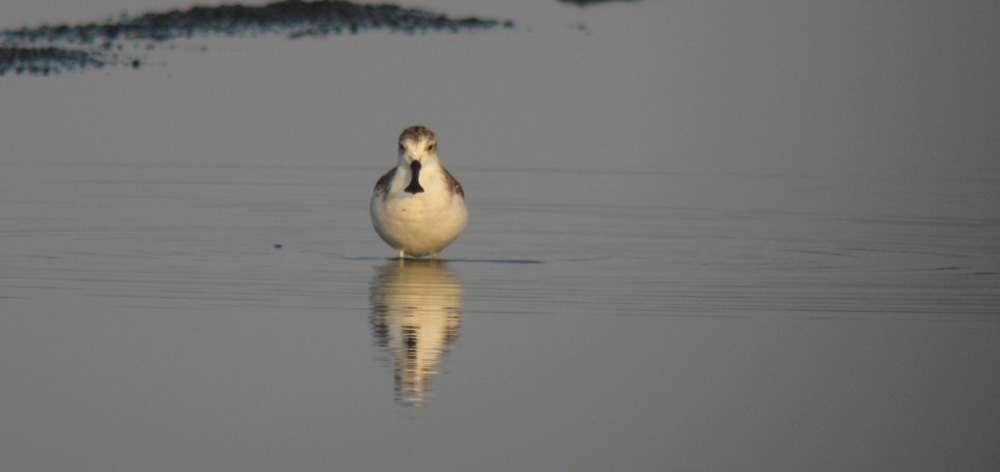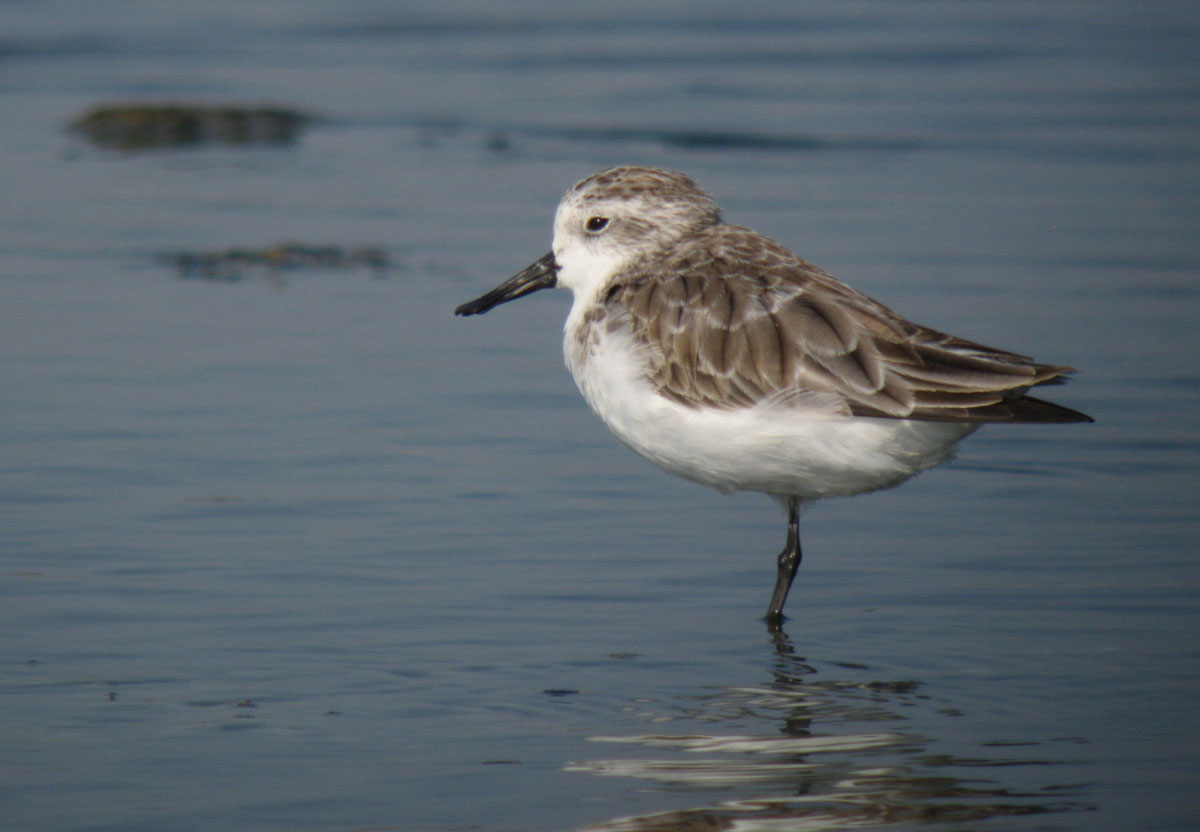
My trip to Thailand (4-14 Feb 2010) was a great success, and I’ll be posting some observations, photos, and sketches here over the next few days. The known Spoon-billed Sandpiper site at Pak Thale was very reliable, with several individuals seen each day there, and up to six in view at once (7 and 10 Feb). We also saw one individual known to be wintering at Khok Kham, closer to Bangkok. This total of seven Spoon-billed Sandpipers may represent as much as 5% of the world’s population.
For details of locations check out my Google map of Spoon-billed Sandpiper distribution and zoom in on Thailand.
Tips on finding Spoon-billed Sandpipers in Thailand
For general directions and travel advice visit Nick Upton’s excellent website Thaibirding.com. Once at Pak Thale it proved very important to get there early in the morning. The tide was always high in the morning, and the birds seemed to be consistent early morning visitors to their favorite ponds. Also, in early morning, the lighting was better, the wind lighter, and the temperature cooler, all making for more enjoyable viewing.
If you are really adventurous this trip can be done on your own, by renting a car and using maps or GPS, but I would recommend hiring a guide so you don’t have to worry about driving and navigating. These sites are working salt farms, and even though they are visited by many birders these few months each year, it can be very helpful to be able to speak to the locals (or have a guide who can) so you can ask and receive directions on where it is OK to walk, etc. We hired Pinit Sangkaew and Dr. Kaset Sutasha at different times, who were both excellent birders and great company.

At Pak Thale my routine was to arrive before sunrise (about 6:15 AM) and go straight to the most reliable pond (pond 2 on the Google map). Every morning there were at least two individuals in this pond and/or pond 3, but on most days they quickly moved on to other ponds. The favored ponds change with water levels from day to day, and water levels are controlled by the needs of the salt works, so it is necessary to check and assess the water levels in the ponds each morning.
Spoon-billed Sandpipers come into the salt ponds at high tide, and presumably leave at low tide for the extensive mudflats on the Gulf of Thailand. The Gulf of Thailand does not have the typical cycle of two high and two low tides each day, and in early February the tide was high every morning at about 9 AM, and low every afternoon and evening. On at least one day a strong onshore wind kept the water high so the flats were never exposed and birds stayed in the high tide roosts in the salt ponds.
Ponds with a mosaic of shallow water and exposed mud were best. In general Spoon-billed Sandpipers chose the same habitat as Red-necked Stints, but they would patrol the deeper water near the stints, and at times would even wander into large expanses of deeper water among feeding flocks of Curlew or Marsh Sandpipers. The most reliable spots to see them in these ponds were along submerged or barely exposed small narrow dikes crossing the larger ponds.
I only saw the species resting three times in eight mornings of observation, nearly every bird seen was actively foraging. Red-necked Stints also were rarely seen resting, so this is perhaps a trait of small sandpipers in general and not unique to Spoon-billed Sandpiper.
The Spoon-bills did move around a lot, and rarely stayed in one pond for more than an hour before flying on to another site. By watching a flying bird’s path I was usually able to see where it landed and then refind it after a short walk. Although small numbers would sometimes gather in one pond, the birds still acted very much as individuals. They did not seem to gravitate to each other within the pond, except to the extent that they all chose the same small patch of habitat. Many times I had the experience of watching one bird, then realizing that a second, and later a third, had arrived at the same location. Conversely, a group of several birds would gradually dwindle to one and then none as birds left individually. I never saw two Spoon-billed Sandpipers flying together.
Counting the Spoon-billed Sandpipers in this area is very difficult, given the large amount of habitat, the birds’ frequent movement, and their lack of flocking. In eight mornings I saw six birds together on two different occasions, once for about 30 seconds and once for about 30 minutes. There could easily be more than six individuals in the area, although if there are more than six the total number is probably not much higher than six. On the other hand the salt pond habitat extends for miles along the coast there, and I don’t know how thoroughly it has been surveyed, so it is possible that other “clusters” of wintering Spoon-billeds exist there.
Something about these few ponds (especially the ponds marked 2 and 3 on the map) has been consistently attractive to Spoon-billed Sandpipers for years. During my visit the birds passed through those ponds early in the morning and then moved on to other ponds, only occasionally returning (or perhaps new birds passing through) later in the middle of the day. Whether these ponds are attractive because of some characteristic of the ponds (e.g. either invertebrate populations or a particular type of mud) or because of their proximity to low tide foraging sites on the Gulf of Thailand, or some other factor, is unknown.
Where these birds go at low tide is unknown. Presumably they join the thousands of other sandpipers on the very extensive tidal mudflats along the Gulf of Thailand. Mark Andrews reports seeing birds from the boardwalk at Laem Pak Bia well south of the Pak Thale ponds. On 13 Feb I was watching five birds at noon and decided to wait to see which way they flew when the tide dropped. but by 3 PM the tide still hadn’t dropped (presumably because of an onshore wind) and I left the birds still in the pond.
Visiting birders could help add to current knowledge. Surveys of other ponds along this coast should be undertaken, and an effort to locate the low tide foraging sites should be a top priority.


So glad they were still there (for your sake but mostly for theirs). Despite plummeting numbers on the breeding grounds, this little wintering population seems to have been relatively stable… but oh so fragile. It’s such a concern. Thanks for posting this interesting report. Ken.